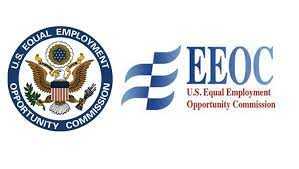NOV 2022, Vol 19, Issue 11
Overview
- EEOC Releases Updated 'Know Your Rights' Poster
- Combating Quiet Quitting
EEOC RELEASES UPDATED KNOW YOUR RIGHTS’ POSTER
Covered Employers Required by Law to Display Poster at Work Site
On October 19, 2022, the U.S. Equal Employment Opportunity Commission (EEOC) released the ‘Know Your Rights’ poster, which updates and replaces the previous “EEO is the Law” poster. Covered employers are required by federal law to prominently display the poster at their work sites. The EEOC’s web page for the poster provides information about where to post it. The poster also includes a QR code for applicants or employees to link directlyto instructions for how to file a charge of workplace discrimination with the EEOC.
A number of the laws that the EEOC enforces require covered employers to post a notice describing the Federal laws prohibiting job discrimination. The poster summarizes these laws and explains that employees or applicants can file a charge if they believe that they have experienced discrimination. The poster shares information about discrimination based on:
- Race, color, sex (including pregnancy and related conditions, sexual orientation, or gender identity), national origin, religion,
- Age (40 and older),
- Equal pay,
- Disability,
- Genetic information (including family medical history or genetic tests or services), and includes
- Retaliation for filing a charge, reasonably opposing discrimination, or participating in a discrimination lawsuit, investigation, or proceeding.
“The new ‘Know Your Rights’ poster is a win-win for employers and workers alike,” said Chair Charlotte A. Burrows. “By using plain language and bullet points, the new poster makes it easier for employers to understand their legal responsibilities and for workers to understand their legal rights and how to contact EEOC for assistance. The poster advances the EEOC’s mission both to prevent unlawful employment discrimination and remedy discrimination when it occurs.”
The new “Know Your Rights” poster includes these changes:
- Uses straightforward language and formatting;
- Notes that harassment is a prohibited form of discrimination;
- Clarifies that sex discrimination includes discrimination based on pregnancy and related conditions, sexual orientation, or gender identity;
- Adds a QR code for fast digital access to the how to file a charge webpage;
- Provides information about equal pay discrimination for federal contractors.
The poster is available in English and Spanish and will be available in additional languages at a later date.
The posters should be placed in a conspicuous location in the workplace where notices to applicants and employees are customarily posted. In addition to physically posting, covered employers are encouraged to post a notice digitally on their websites in a conspicuous location. In most cases, electronic posting supplements the physical posting requirement. In some situations (for example, for employers without a physical location or for employees who telework or work remotely and do not visit the employer's workplace on a regular basis), it may be the only posting. Covered employers are subject to fines for noncompliance.
The Americans with Disabilities Act (ADA) requires that notices of Federal laws prohibiting job discrimination be made available in a location that is accessible to applicants and employees with disabilities that limit mobility.
- - - -
Combating Quiet Quitting
Whether your team has a few quiet quitters or not, the trend is likely to affect your workforce sooner or later. Consider implementing these tactics to prevent the issue from spreading in your organization:
Build a Culture of Connection
Communication is key to preventing an employee from becoming disengaged. Frequent team and one-on-one meetings are important to ensure employees know what is expected of them and have what they need to succeed in their role. Plus, these weekly syncs can foster strong employee-manager relationships and can be a good time to discuss career goals and growth opportunities.
Communication is a two-way street, leaders should offer various feedback opportunities to keep a pulse on employee satisfaction. Whether you leverage surveys, assessments, or company-wide meetings, it's important to truly listen to your employees' needs.
Invest in Your Employees
One of the top reasons people quit last year was a lack of career development and growth opportunities. Organizations must play an active role in building career paths that align with the interests of both the employee and the company's goals. Investing in adequate resources and programs to grow employees is a big part of an effective retention strategy.
Ask your employees about their interests and career goals – are there particular skills they want to develop or leverage? Is there a specific project they want to be a part of? From there, you can build a career map with potential opportunities and resources to support their professional growth. Implementing a flexible career path allows employees to have visibility into their future at your organization and can directly impact their motivation, career satisfaction, and productivity.
Part of keeping employees engaged is keeping them excited about their future and letting them have a say in their careers. According to a LinkedIn Workplace Report, 94% of employees would stay at a job longer if they had access to career development.
Plan Your Workforce
Workforce planning helps forecast business demands and identify current gaps to determine whom you need to hire and when. Part of this includes assessing the skills of existing employees and placing them in roles where they can leverage them – improving engagement and retention. Effective workforce planning also helps identify skill gaps so leaders can provide the necessary training and resources to develop existing employees for the future. Proactively preparing for the future needs of your business will help you maintain adequate staffing levels and avoid overburdening your existing staff.
Recognize and Reward Your People
Quiet Quitting, for some, isn't about avoiding work; it's about lacking a sense of purpose. It is important to show employees how their contributions can impact the business's overall success. Employees are more likely to go above and beyond when they know their work is valued and making a difference.
Organizations should create fair and consistent recognition and promotion guidelines to help employees feel seen. Monetary compensation will of course be welcomed by employees, but a simple "thank you," or other forms of recognition can go a long way to help your employees feel valued.
- - - -
Contact HR Strategies staff at 302.376.8595 orinfo@hrstrategies.org if you would like support or would like to learn more about the items in this newsletter. Please contact us if you would like to be added to our Monthly Strategies mailing list or if you would like for us to add someone else lo our mailing list.

